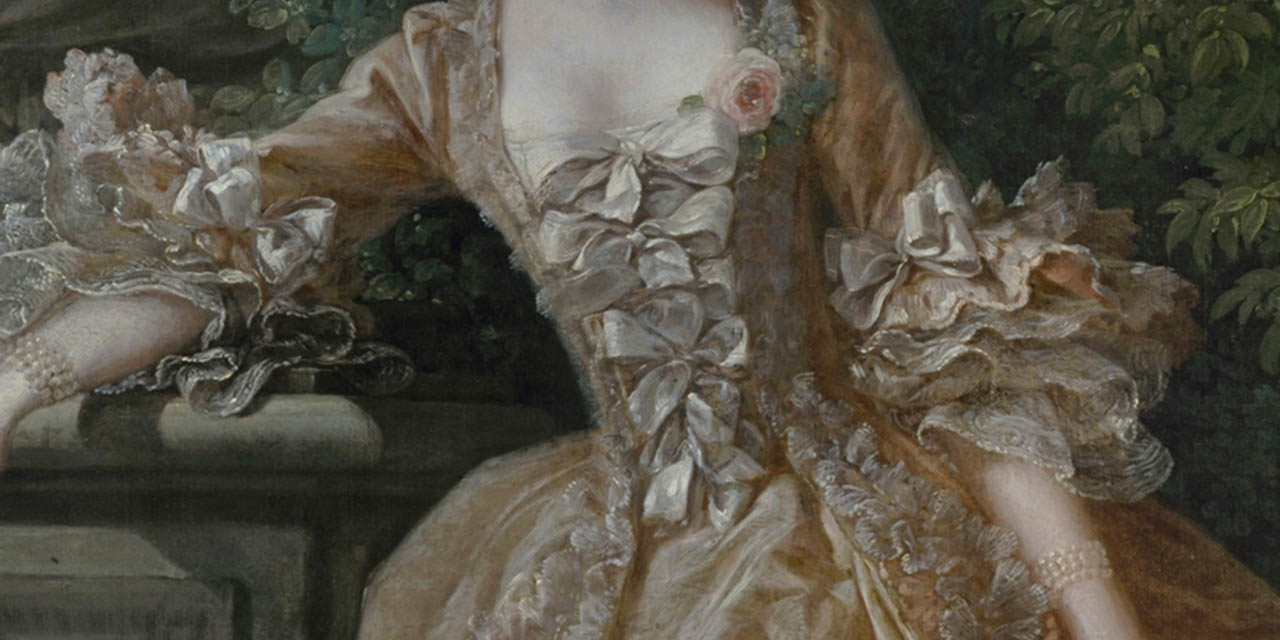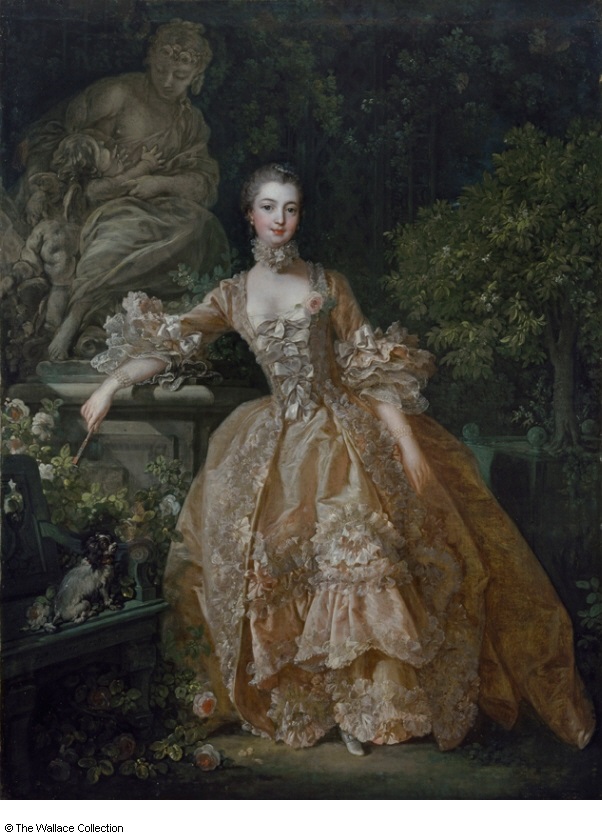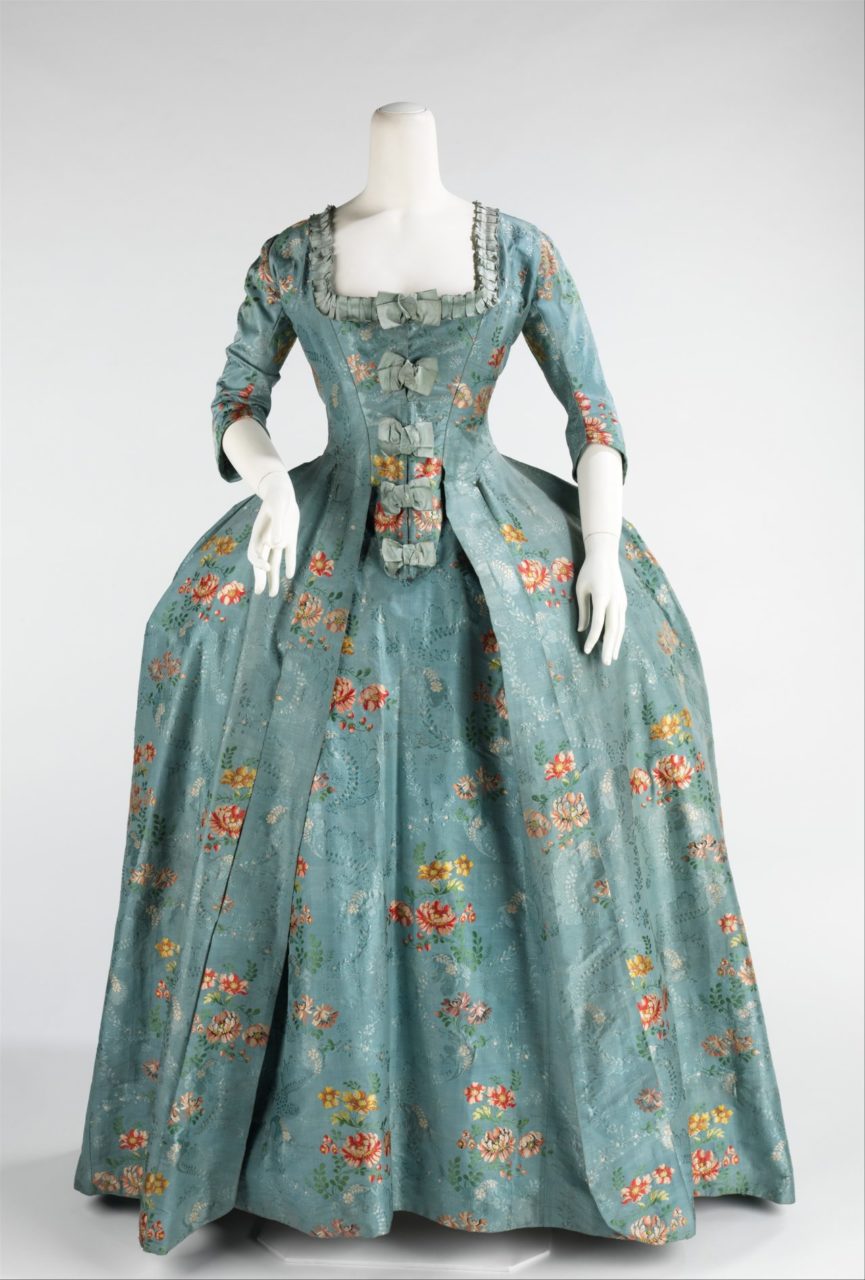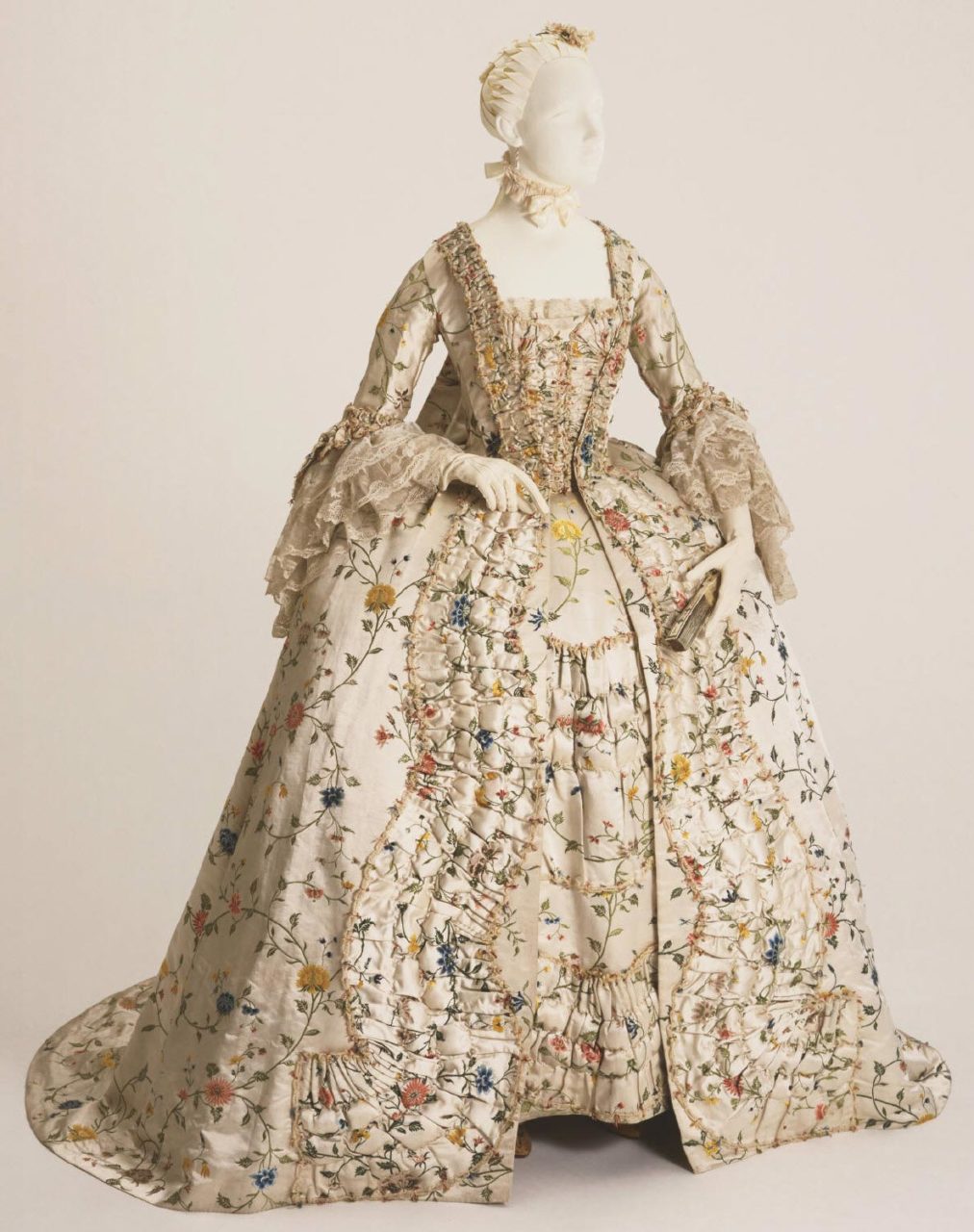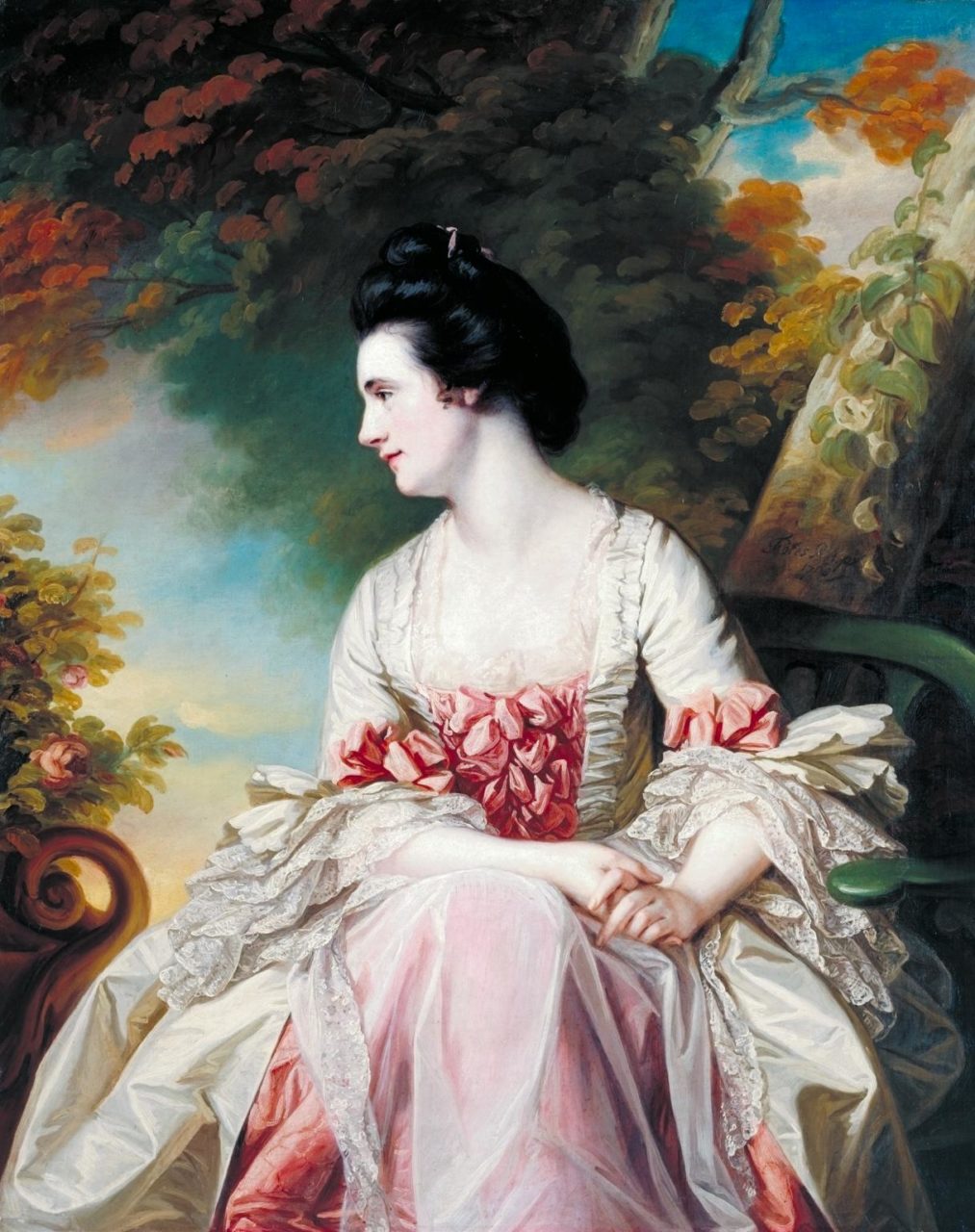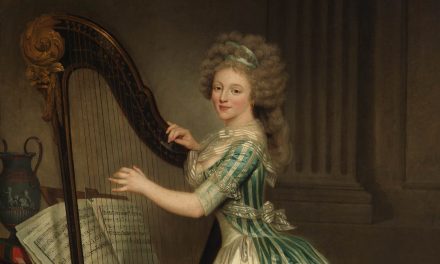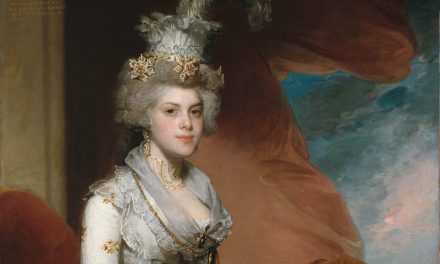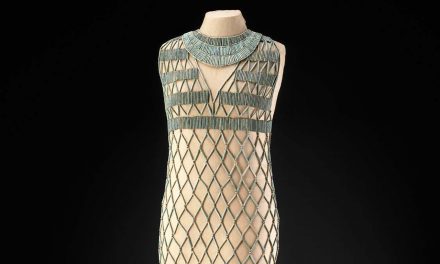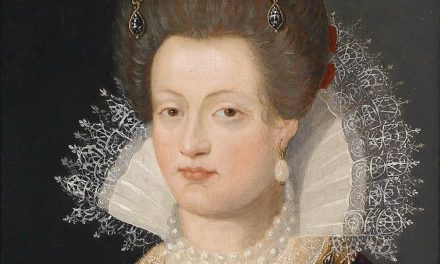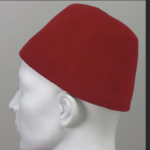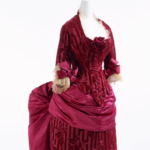A decorative ladder of bows descending down the stomacher of a dress. Worn during the late 17th and 18th centuries. Sometimes spelled eschelle.
The Details
The Dictionary of Fashion History (2010) by Valerie Cumming, C.W Cunnington, and P.E. Cunnington defines an échelle as:
“Period: Late 17th to late 18th century.
A stomacher trimmed down the front with ribbon bows arranged like the rungs of a ladder.”
Madame de Pompadour particularly favored échelles, as a François Boucher portrait attests (Fig. 1). Fashion, Costume, and Culture: Clothing, Headwear, Body Decorations, and Footwear Through the Ages (2013) notes:
“Heavily decorated stomachers became especially popular in the eighteenth century. One of the most popular styles of that century was the échelle or eschelle, a series of bows tied down the front of the stomacher, decreasing in size from the neck to the waist. This style was introduced by French trendsetter Madame de Pompadour (1721–1764), the mistress of French king Louis XV (1710–1774), and was quickly copied throughout Europe as part of a gown style called robe à la française.” (506)
The Met has a robe à la française in their collection that features a series of bows down the front, though these are notably all the same size (Fig. 2). The Philadelphia Museum of Art features a more traditional échelle on a stomacher that is in the same fabric as the rest of the gown (Fig. 3).
In History of World Costume and Fashion (2011), Daniel Delis Hill writes:
“Open-front bodices were filled by richly decorated stomachers pinned or hooked to the robings or flat folds of fabric along the finished edges of the bodice opening. The eschelle, with its ladder of bows in descending sizes from neckline to waist, was revived from the previous century by the Marquis de Pompadour, the mistress of Louis XV.” (439)
A portrait of an English woman dressed in the French style features a rose pink échelle that matches her petticoat, but pops against the ivory gown (Fig. 4).
Fig. 1 - François Boucher (French, 1703-1770). Madame de Pompadour, 1759. Oil on canvas; 91 x 68 cm (35.8 x 26.7 in). London: Wallace Collection. Source: The Wallace Collection
Fig. 2 - Designer unknown (French). Robe à la française, 1760-1770. Silk, cotton. New York: The Metropolitan Museum of Art, 2009.300.903a, b. Gift of the Brooklyn Museum, 2009. Source: The Metropolitan Museum of Art
Fig. 3 - Designer unknown (French). Woman's dress (Robe à la française) with Matching Stomacher and Petticoat, 1755-1760. Chinese export silk-brocaded satin, silk and silk chenille looped fringe; 160 x 59.7 cm (63 x 23 1/2 in). Philadelphia: Philadelphia Museum of Art, 1988-83-1a--c. Purchased with the John D. McIlhenny Fund, the John T. Morris Fund, the Elizabeth Wandell Smith Fund, and with funds contributed by Mrs. Howard H. Lewis and Marion Boulton Stroud, 1988. Source: PMA
Fig. 4 - Francis Cotes (English, 1726-1770). Portrait of a Lady, 1768. Oil on canvas; 126.6 x 101.6 cm (49.8 x 40 in). London: Tate, N04689. Bequeathed by Sir Edward Stern 1933. Source: Tate UK
References:
- Cumming, Valerie, C. W. Cunnington, and P. E. Cunnington. “Echelles.” In The Dictionary of Fashion History, 73. Oxford: Berg Publishers, 2010. Accessed September 17, 2018. https://www.bloomsburyfashioncentral.com/products/berg-fashion-library/dictionary/the-dictionary-of-fashion-history/echelles.
- Ettesvold, Paul M. The Eighteenth-Century Woman: An Exhibition at the Costume Institute, December 12, 1981-September 5, 1982. New York: Metropolitan Museum of Art, 1981. http://www.worldcat.org/oclc/474474948.
- Hill, Daniel Delis. History of World Costume and Fashion. Upper Saddle River, NJ: Pearson Prentice Hall, 2011. http://www.worldcat.org/oclc/939043732.
- “Seventeenth-Century Clothing.” Fashion, Costume, and Culture: Clothing, Headwear, Body Decorations, and Footwear Through the Ages, edited by Sara Pendergast, et al., 2nd ed., vol. 3: European Culture from The Renaissance to the Modern Era, UXL, 2013, pp. 491-509. Gale Virtual Reference Library, http://libproxy.fitsuny.edu:2540/apps/doc/CX2760000099/GVRL?u=fitsuny&sid=GVRL&xid=4f316a5c. Accessed 17 Sept. 2018.
- Tortora, Phyllis G., and Sara B. Marcketti. Survey of Historic Costume. Sixth edition. New York: Fairchild Books, 2015. http://www.worldcat.org/oclc/910929404.

